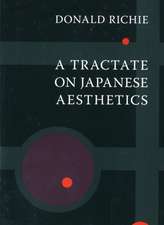A Social History of Iranian Cinema, Volume 3 – The Islamicate Period, 1978–1984
Autor Hamid Naficyen Limba Engleză Paperback – 5 apr 2012
Preț: 264.43 lei
Nou
Puncte Express: 397
Preț estimativ în valută:
50.60€ • 52.20$ • 42.22£
50.60€ • 52.20$ • 42.22£
Carte tipărită la comandă
Livrare economică 27 martie-10 aprilie
Preluare comenzi: 021 569.72.76
Specificații
ISBN-13: 9780822348771
ISBN-10: 0822348772
Pagini: 288
Ilustrații: 42 illustrations, 8 tables
Dimensiuni: 156 x 234 x 31 mm
Greutate: 0.46 kg
Ediția:New.
Editura: MD – Duke University Press
ISBN-10: 0822348772
Pagini: 288
Ilustrații: 42 illustrations, 8 tables
Dimensiuni: 156 x 234 x 31 mm
Greutate: 0.46 kg
Ediția:New.
Editura: MD – Duke University Press
Recenzii
Hamid Naficy is already established as the doyen of historians as well as critics of Iranian cinema. This massive, detailed, as well as extremely scholarly critical history of Iranian cinema since its very foundation more than a century agobased as it is on a good understanding of modern Iranian political and social historyis the crowning of all his highly instructive and informative works so far. Each of the volumes can be read separately as well as a part of this colossal critical narrative. To say that it is a must read for virtually all concerned with modern Iranian history, and not just cinema and the arts, is to state the obvious. Homa Katouzian, author of The Persians, Ancient, Mediaeval and Modern IranThis magisterial four-volume work on Iranian cinema will be the defining work on the topic for a long time to come. Situating film within its socio-political context, the work covers the period leading up to the Constitutional Revolution and continues after the Islamic Revolution, examining questions about modernity, globalization, Islam and feminism along the way. It is a definitive work for our thinking about cinema and society and how issues of creativity and expression in one particular form, film, should be integrated into a wider engagement with social issues. Demand that your library buys this superb work of academic scholarship! Annabelle Sreberny, SOAS, University of LondonThis book is an extraordinary achievement. Professor Hamid Naficys history of Iranian cinema (from its very beginnings to the present day) is scholarly and detailed and he has handled this mass of material with the lightest touch. It is, however, Naficys own personal experience and investment that gives this book a particular distinction. Only a skilled historian who is also on the inside of his story, could convey so vividly the cinemas symbolic significance for twentieth century Iran and the depth with which it is interwoven with its national culture and politics. Laura Mulvey, author of Death 24x a Second: Stillness and the Moving Image
Cuprins
Notă biografică
Descriere
The third volume of Hamid Naficys four-volume history of Iranian cinema is the shortest, covering the revolution at the end of the Shahs regime and the establishment of the Islamicate state. Movies were seen as a part of the corruption of the Shahs era and a third of the movie houses were destroyed during the revolution. The uprising and revolution were filmed by both amateurs and professionals and Naficy describes what these filmmakers had to do to capture the events. As part of the new Islamic regimes attempt to make a more Islamic film industry, new rules went into effect in 1982 and Naficy shows that the government was not against film per se, only against the portrayal of particular themes or behaviors.

















